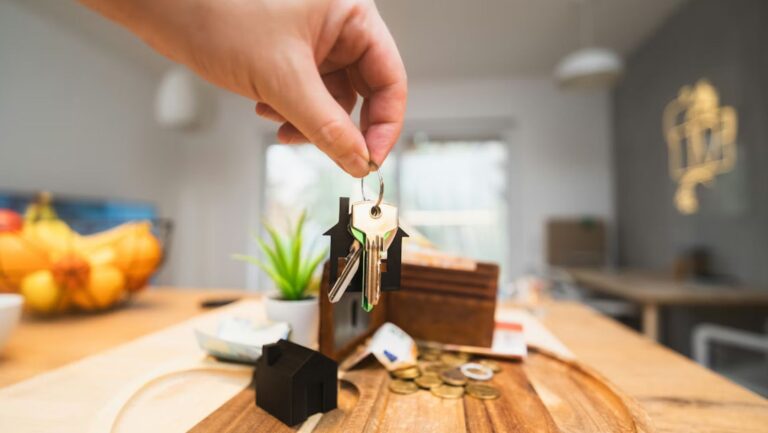The dream of homeownership is increasingly distant. Living in a high-interest-rate world means mortgages are drastically more expensive, shifting the focus from qualifying for a loan to affording the massive monthly payment. The solution is a larger down payment, which demands profound and rapid saving.
Old advice like “skip the latte” is useless when you need tens of thousands extra. You must perform surgical cuts on the three biggest financial drains, requiring a “tough love” sacrifice for the long-term goal. Stop looking for pennies and start hunting for thousands.
This means conducting a lifestyle audit of entertainment, transportation, and daily conveniences. The “just for fun” budget is often the most inflated. Mastering this category is key: by carefully budgeting online leisure and allocating a fixed amount to recreational platforms like Vulkan Bet, you establish control and ensure all spending supports your goal. When saving for a house, this entire category demands a temporary, ruthless review.
The “Hard Pill” Savings Plan: Where to Cut
It’s time for that tough love. Saving a life-changing amount of money won’t happen by accident. It happens by identifying the major leaks in your financial boat and patching them completely, not just bailing water. Here are the three biggest offenders.
The New (or New-ish) Car Payment
This is the most significant and noticeable “mortgage killer.” A brand-new car is a status symbol that loses value the moment you drive it off the lot. That $500, $600, or even $800 monthly payment, plus the higher insurance, is a direct drain on your down payment fund. Let’s do the math: A $600 monthly payment is $7,200 a year. Over three years of saving, that’s over $21,000. The solution is simple, even if it’s not glamorous. Sell the expensive car, buy a reliable “beater” with cash, and drive it for the 2-3 years you’re in saving mode.
The “Death by a Thousand Clicks” Convenience Tax
This is the invisible spending that adds up faster than you can imagine. It’s the Uber Eats, the DoorDash, the Amazon Prime impulse buys, and the dozen different streaming services you’re subscribed to. It’s the “convenience tax” you pay for not planning. When you’re tired and order a $40 food delivery, you’re not just spending $40; you’re trading a piece of your down payment for 30 minutes of convenience. A ruthless audit of these “death by a thousand clicks” expenses can easily free up hundreds of dollars a month. Delete the apps, plan your meals, and make your coffee at home.
The “FOMO” Entertainment Budget
“FOMO” (Fear of Missing Out) is the enemy of your down payment. This category includes $15 cocktails, $200 concert tickets, weekend brunches, and frequent bar tabs. It’s the money you spend trying to “keep up” with a lifestyle that isn’t compatible with your goal. This doesn’t mean becoming a hermit, but it does mean a radical shift. Instead of going out for expensive dinners, host a potluck. Instead of going to a bar, have a board game night. Swap a weekend getaway for a hike or a day at a free museum. This cut is about finding low-cost or free ways to be social.
This Isn’t Forever, It’s a Sprint
Here is the most important part of this entire plan: this is not a permanent lifestyle change. You are not giving up food delivery or a nice car forever. You are making a temporary, strategic sacrifice to achieve a massive, life-altering goal.
This is a short-term, aggressive sprint. You must reframe the sacrifice. You’re not “giving up” brunch; you’re “buying” your future kitchen. You’re not “stuck” with an old car; you’re “driving” toward your front door. This mindset is the only thing that will keep you disciplined when you’re tempted to slip back into old habits.
What to Do With the Money You Save
So, you’ve made the cuts and freed up an extra $1,000, $1,500, or even $2,000 a month. Congratulations. Now you have to protect it from yourself. If that extra money just sits in your regular checking account, you will find a way to spend it. This new “house fund” needs to be made invisible and automatic.
Here is your three-step action plan:
- Automate Your Savings: The very first day you get paid, have an automatic transfer set up to move that saved money out of your checking account. You can’t spend what you can’t see.
- Open a High-Yield Savings Account (HYSA): Do not let your down payment sit in an account earning 0.01% interest. In a high-interest-rate world, HYSAs are your best friend. Your money should be generating income, even when it’s just sitting there.
- Label the Account: This is a potent psychological trick. Open the HYSA and name it “Future Home Down Payment.” When you’re tempted to pull money for a vacation, seeing that label will be a powerful reminder of what you’re working for.
Your Future Front Door
High-interest rates haven’t made homeownership impossible; they’ve just raised the stakes. They demand a more focused, aggressive, and disciplined approach than what was required just a few years ago. You can’t “drift” into buying a house in this market. You have to fight for it. By making these three significant, temporary cuts, you are not closing yourself off from the world. You are actively, decisively, and powerfully choosing to build your future. The sacrifices you make for the next 24 months will echo for the next 24 years.





